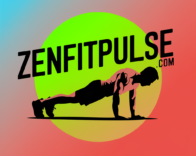
The push-up is considered the basic workout exercise for building upper body strength. It engages the chest, arms, shoulders, and core. But some poses are hard, especially for people who have a tough time getting down on the ground or practicing with injuries or your upper body may not be strong. But don’t worry! It is important to note that whilst each of these alternative exercises replicate the way your muscles as used in a push up, they are easier on the body.
Today, we’ll cover some basic exercises which are Push-Up Alternatives to build a stronger chest and arms using just dumbbells, which you can think of as the push-up prep or maybe even ultimate for people wanting to avoid those movements long-term.
Why Push-Up Alternatives Are Popular?
While push-ups are still effective, many of us simply lack the ability to do them. Why You Might Need Alternatives
Wrist Pain: Push-ups involve a lot of wrist bending which puts added stress on the wrists, causing some individuals to experience more discomfort or pain.
Shoulder pain: If you have a shoulder problem, doing push-ups could strain your joint.
Traditional push-ups are too difficult for novices
Payback: You may be able to do a push-up, but does it make you even chuckle in the gloomification chamber? Variety will keep you from going stale and hit the muscles in different ways.
If you want to keep working upper body with push up alternatives this is perfect as long with other push-ups.
5 Push-Up Alternatives for Beginners
1. Wall Push-Ups

Wall Push-ups are a great place to start if you are new to push-ups and / or need offload some of the pressure on your joints. In almost feeling like a traditional push-up, this variation is at lower intensities.
How to do it:
Make fists with your hands and, standing facing a wall, bang them on the side of the wall in front of you
Here, you post your hands shoulder-wide separated on the divider.
Take a slight step back with your body at an angle
Keep your body in a straight line, and bend your arms to bring your chest towards the wall.
Press yourself back to the position you started from.
Why it works: This variation trains your chest and arms, but doesn’t require much from your wrists or shoulders. Extend out in addition to far from the wall for a more tough experience — you can reduce the span as needed.
2. Knee Push-Ups
Beginners may choose to perform knee push-ups in lieu of standard push-ups. This type enables you to perform push-ups in a traditional manner; however, these KNEE PUSH-UPS relieve up to half of your body weight as some part is supported on your knees thereby decreasing the intensity.
How to do it:
Begin in a plank position with your knees on the ground
Your body should be in a straight line from your head to your knees.
Bend your elbows close to your sides and lower your chest toward the ground.
Return to the starting position and repeat.
Why it works: This variation reduces the amount of weight you’re lifting, which is an excellent alternative if you’re still building strength in your chest, shoulders and arms.
3.Incline Push-Ups

Place your hands up on an incline to make the movement available even more accessible. Works on anything from a bench to a solid table, heck even on the couch
How to do it:
With your hands placed on a raised object, move your feet back until you are in a straight line.
Bend your arms to lower your chest towards the surface.
Return to the original position.
Why it works: This modification is easier on your shoulders and wrists, but still targets the chest, shoulders and arms. The higher the surface, easier it is to perform the push-up.
4. Chest Press with Dumbbells
Chest Press with Dumbbells: One of my favorite weight-based push-up alternatives, the chest press targets both the triceps and chest. This way, you can gain strength without the load of your body weight weighing you down.
How to do it:
How: Lie on your back on a bench or the floor, with dumbbells in each hand.
Raise your arms straight above your chest, palms facing forward
Lower the dumbbells to your chest with elbows bent at 90-degree angles.
Press the weights back up to start.
Why it’s so effective: Chest presses work the chest muscles similarly to a push-up minus the hand and shoulder strain of being down on the ground.
5. Plank to Downward Dog

Although this is not a direct push-up alternative, it still works to the benefit of your chest, arms, shoulders and especially core.
How to do it:
Begin in a high plank, palms directly under your shoulders.
Exhale, press into your palms, lift your hips up and back to Downward Facing Dog (Table Top to begin if easier on the arms).
Return to plank and repeat.
Why The Exercise Works: This exercise is fantastic for developing the muscles in your upper body, as well as stretching and lengthening them, leaving you lean with a combination of strength and symmetry.
Benefits of Push-Up Alternatives
Flexibility: This doesn’t mean that you can do it anytime, anywhere but you have the freedom to adjust the difficulty level of your exercises to fit your own fitness level.
Less Chance of Injury: If you perfect your form so that non-target muscles (like the wrists or shoulders) are not stressed during any exercise, then there is a low probability of getting injured.
Substitute For Strength Progression: You will be able to gain strength and a stronger core side when doing the alternative so you can move on traditional push-ups eventually.
Better Form: These exercises teach you proper arm patterns, so that when you do more difficult movements, you don’t mess up.
FAQ: Push-Up Alternatives
1. Can I build chest muscles without doing push-ups?
Absolutely! Activities like dumbbell chest presses, incline push-ups and Wall Push-Ups are quite good in performing the movements. Push-ups are not the only way to increase arm and chest strength.
2. What Are The Push-up Alternatives for Shoulder Injuries?
Of course, there are plenty of easier push-up alternatives out there — wall push-ups and chest presses would likely be easier on the shoulders. However, if you have a shoulder injury, it is always advisable to seek the advice of a professional before beginning any routine.
3. What to do instead of push-ups?
You should do three isolation exercises like these (one for each area) 2–3 times per week in order to give the muscles a chance to adequately recover. Add them into a full-body workout, or integrate during upper-body training days.
4. How long until you can transition from alternatives to full push-ups?
This is going to depend on where you start and your consistency. And although it might just take you 4-6 weeks to start seeing changes with dedicated practice, everyone’s fitness journey is different.
5. Do push-up substitutes make you slim down?
While these exercises will help with weight exchanges, you typically lose weight through the trifecta of resistance training, cardio and a healthy diet. Adding push-up alternatives to your workout can only help you with losing weight, through muscle building and speeding up metabolism.
Conclusion
Good push-up substitutes for beginners or those with combative forces/hindrances You can exercise in other ways as well to develop muscles in your chest and arms, including wall push-ups, knee push-ups, incline push-up variations like with a chair or the side of a table, resistance band exercises (like this), chest presses with weights on the floor or even standing (with hand weights — such as here for example), and plank to downward dog.
As you get stronger, you will be able to tackle even more difficult moves like regular push-ups because of the powerful base that this basic exercise gives. The point is, it’s a journey, and there’s no shame in sufficient starting at our own level to modify for you.
Discover more from zenfitpulse
Subscribe to get the latest posts sent to your email.

